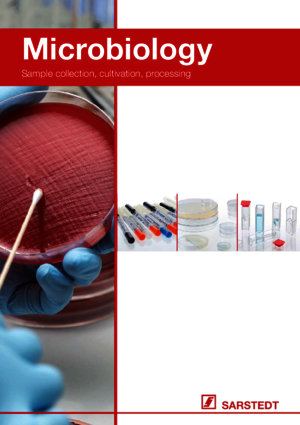
Microbiology
Microbiology
Language:
We produce Petri dishes made from high-quality and transparent polystyrene for the cultivation of microorganisms. Due to their high shape retention, they are perfect for use in automated plate filling systems and are easily stacked. The user has a choice between Petri dishes with and without ventilation cams, a multitude of round Petri dishes with different standard diameters, each as a two-compartment and square version, as well as coloured Petri dishes for clear coding.
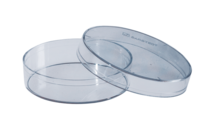
Petri dish, (ØxH): 54.65 x 14.7 mm, material: PS, transparent, without ventilation cams, sterile, 10 piece(s)/bag
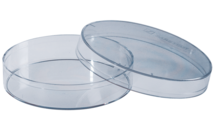
Petri dish, (ØxH): 68.45 x 15 mm, material: PS, transparent, without ventilation cams, 10 piece(s)/bag
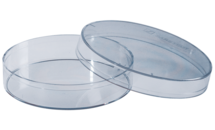
Petri dish, (ØxH): 68.45 x 15 mm, material: PS, transparent, without ventilation cams, sterile, 10 piece(s)/bag
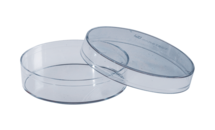
Petri dish, (ØxH): 54.65 x 14.7 mm, material: PS, transparent, without ventilation cams, 10 piece(s)/bag
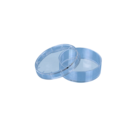
Petri dish, (ØxH): 35 x 10 mm, material: PS, transparent, with ventilation cams, sterile, 20 piece(s)/tube bag
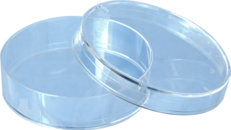
Petri dish, (ØxH): 60 x 15 mm, material: PS, transparent, with ventilation cams, sterile, 20 piece(s)/tube bag
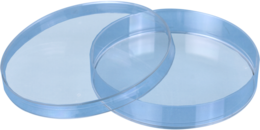
Petri dish, (ØxH): 92 x 16 mm, material: PS, transparent, without ventilation cams, 20 piece(s)/tube bag
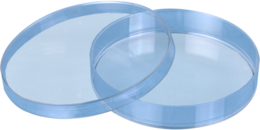
Petri dish, (ØxH): 92 x 16 mm, material: PS, transparent, without ventilation cams, sterile, 20 piece(s)/tube bag
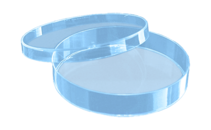
Petri dish, (ØxH): 92 x 16 mm, material: PS, transparent, with ventilation cams, 20 piece(s)/tube bag
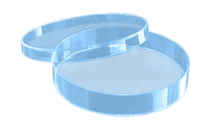
Petri dish, (ØxH): 92 x 16 mm, material: PS, transparent, with ventilation cams, sterile, 20 piece(s)/tube bag

The high level of dimensional stability means that our Petri dishes are optimally suited to use in automated plate casting machines.
Petri dishes with ventilation cams offer improved gas exchange. Variants without ventilation cams offer the possibility of longer incubation due to lower rates of evaporation.
A Petri dish divided into two separate compartments offers the option to carry out parallel tests under comparable conditions or to use two different culture media.
Our 80.625 swab cannot be autoclaved. The tube in the swab is made out of the autoclavable plastic polypropylene, but both the cap (polyethylene) and the swab stem (polystyrene) are not autoclavable. This is due to the low temperature resistance of the PE and PS plastic, which have a maximum long-term use temperature of 60–80°C. Autoclaving is carried out at temperatures of at least 121°C and it is not possible to rule out an impairment of the product as a result of this.
The distance between the base of the cuvette and the centre of the photometer light beam is defined as the centre height (Z). The centre height can vary depending on the manufacturer and the type of photometer, which is why Sarstedt offers UV cuvettes in two different centre heights (Z = 8 mm and Z = 15 mm). If customers do not know the exact centre height of the photometer, this information can be requested from the device manufacturer.
Fluorescence measurements are carried out at a 90° angle to the direction of the photometer beam and can therefore only be used in quadruple optical cuvettes. We offer a quadruple optical cuvette made of polystyrene (67.754) or PMMA (67.755) especially for this application.
Thanks to their optical properties, our polystyrene cuvettes can be used from the visual range to the UV range to 330 nanometres (nm). In contrast to this, acrylic (PMMA) cuvettes are characterised by a high level of transparency in the UV range and can therefore be used to approximately 300 nm. The plastic material of the UV cuvette enables measurements in the UV range from a wavelength of 220 nm.
Our inoculation loops, inoculation needles and inoculation spreaders are comfortable to handle and increase safety in the workplace. They reduce the risk of cross contamination and save time due to the omission of sterilising with heat or flame-scarfing between two inoculations. They also prevent pathogenic aerosols which harbour the risk of spreading germs. Flexible inoculation loops are used for the simple carrying out of swabs or inoculation in liquid medium. Two versions are available, 1 µl and 10 µl, which are colour-coded to make them easier to differentiate. The inoculation needles should be used for seeding or withdrawing individual colonies. We recommend the use of the inoculation spreaders to place large volumes on culture media.
Both the DishRack 50 (93.1647) and the DishRack 80 (93.1646) are made from polycarbonate. In principle, it is possible to autoclave the racks, but if they are autoclaved several times (more than three times) tension cracks can occur on the rivet lugs of the racks, although this does not affect the stability of the racks.